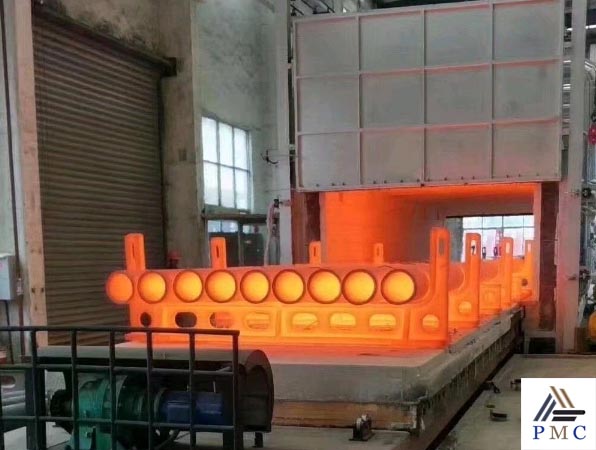
Surface Decarburization of Steel Pipes in Heat Treatment and Its Preventive Countermeasures
Decarburization is a phenomenon in which the surface carbon content of the steel pipe (CS seamless pipe) decreases during the heat treatment process. The essence of decarburization is that the carbon atoms in the steel tube react with the furnace atmosphere such as hydrogen or oxygen at high temperature to form methane or carbon monoxide.

Decarburization is the result of inter-atomic diffusion during heat treatment. On the one hand, oxygen diffuses into the steel; on the other hand, carbon in the steel diffuses outward. A decarburized layer can only form when the decarburization rate exceeds the oxidation rate. When the oxidation speed is high, no obvious decarburization phenomenon occurs, that is, after the decarburization layer is formed, the iron is oxidized to form an oxide scale. Therefore, in an atmosphere with relatively weak oxidation, a deeper decarburized layer can be formed.
The decarburization layer of the steel pipe includes two parts: the full decarburization layer and the partial decarburization layer (transition layer). The partial decarburization layer refers to the structure where the carbon content of the steel is normal after the full decarburization layer. In the case where the decarburization is not serious, sometimes only a partial decarburization layer is seen without a full decarburization layer.
The depth of the decarburized layer can be measured by various methods according to the changes in the decarburized components, structure and properties. In actual heat treatment production, the determination of the decarburized layer of steel by metallographic method is the most common.
Countermeasures to prevent decarbonization mainly include the following aspects:
1) When the workpiece is heated, the heating temperature and the residence time at high temperature should be reduced as much as possible; the heating speed should be reasonably selected to shorten the total heating time;
2) Control the appropriate heating atmosphere to make it neutral or use protective gas for heating;
3) During the hot pressing process, if the production is interrupted due to some accidental factors, the furnace temperature should be lowered to wait for the production to resume. If the pause time is very long, the billet should be taken out of the furnace or cooled with the furnace;
4) When performing cold deformation, reduce the number of intermediate annealing and the temperature of intermediate annealing as much as possible, or use softening tempering instead of high temperature annealing. When performing intermediate annealing or softening tempering, heating should be carried out in a protective medium;
6) Correct heat treatment process operation and increase the machining allowance of the workpiece, so that the decarburized layer can be completely removed during processing.
Go here to learn " How to Prevent Surface Decarburization of Seamless Pipe Products ? "


